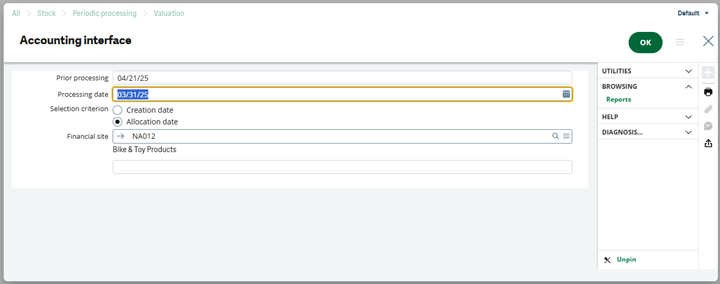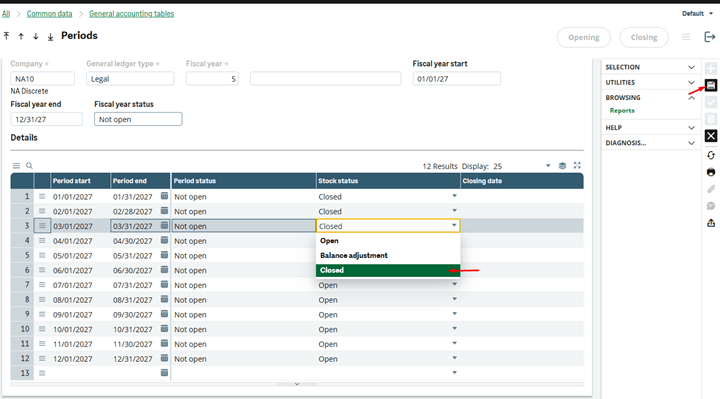
April 30, 2025
Closing a stock period in Sage X3 is an important part of managing inventory. It boosts the accuracy of inventory records and helps ensure that your financial reports reflect the true state of your business. Period-end sock management is an important task for all companies that handle large stock volumes, ranging from small distribution companies to large manufacturing operations.
In this guide, we’ll walk you through the key steps involved in closing a stock period in Sage X3. We’ll also cover some best practices and troubleshooting tips.
Table of Contents
- What is Close Stock Period?
- What Happens When a Stock Period is Closed?
- Top Benefits of Closing a Stock Period
- Closing a Stock Period in Sage X3
- Sage X3 Tips and Tricks
What is Close Stock Period?
A closed stock period in Sage X3 is a completed and closed locked period of inventory activity, usually a month or a quarter. All stock transactions during this period have been finalized and employees are not allowed to make additional changes.
What Happens When a Stock Period is Closed?
When a stock period is closed, it means that certain conditions have been met, including:
- Locked Inventory – Inventory is locked for that timeframe, meaning that data can no longer be changed
- New Transactions Cannot be Posted – Employees can no longer post new inventory movements such as receipts, shipments, transfers, or adjustments during the period
- Financial Reconciliation – Companies have usually reconciled inventory values with general ledger or financial reports
- Audit Readiness – Preserving data as is often crucial for financial audits and reporting purposes
Top Benefits of Closing a Stock Period
Closing stock periods offers many benefits to companies, including improving data accuracy and improving audit readiness. The top benefits of closing stock periods are:
1. Improves Data Integrity – Regularly closing stock periods locks in inventory values and quantities, improving data accuracy. This reduces the risk of accidental or unauthorized changes and also helps reduce fraud.
2. Better Financial Reporting – It ensures that the cost of goods sold (COGS), inventory valuation, and other financials reflect finalized data It also aligns inventory activity with your general ledger and accounting periods.
3. Boosts Compliance & Improves Audit Readiness – Closing stock periods in Sage X3 demonstrates proper internal controls and improves audit readiness. Past periods are already locked and easily traceable, which also helps meet regulatory or internal compliance standards.
4. Streamlines Reconciliations – It is easier for accounting staff to reconcile inventory with accounting after the period has closed. Closing stock periods also reduces discrepancies between inventory and financial reports.
5. Supports Workflows & Better Accountability – Closing stock periods on a regular schedule ensures that transactions are processed efficiently and creates a natural checkpoint for staff to review and correct any potential errors.
6. Better Decision-Making – More accurate, finalized data allows management to make better business decisions and grow their business faster.
Closing a Stock Period in Sage X3
Step 1: Run Stock Accounting Interface
1. Go to Stock > Periodic Processing > Valuation Account > Account. Interface.

2. Select Financial Site and enter the period’s Processing Date.
3. Click OK and review the log for errors. Repeat until all transactions are posted.

Step 2: Generate CLOPER Report
Verify transactions and period status before closing.
1. Navigate to Reports > Reports.
2. Select the CLOPER report code.
3. Run the report to check for unposted transactions or open entries.

4. Address any issues (e.g., unposted journals) before proceeding.

Step 3: Close Stock Period
Prevent further transactions in the period.
1. Go to Common Data > General Accounting Tables > Periods.
2. Select Company and Ledger Type.
3. Set the period’s Stock Status to:
- Balance Adjustment: Allows stock take adjustments.
- Closed: Blocks all transactions.
4. Click the Save button.

Sage X3 Tips and Tricks
This is one in our ongoing series of Sage X3 Tips and Tricks. We’re previously covered other topics including:
Grow Your Business Today
At CertiPro, we are experts in all things related to Sage X3, including implementations, customizations, and Sage Magento eCommerce integrations. We offer a variety of customized Sage X3 enhancements to boost the functionality of your Sage system, including tools to streamline credit card processing, improve the repair handling process, and more.








